Abstract
1. Measurements have been made of the absorption spectra of the lenses of human, baboon (Papio), rhesus monkey (Macaca), squirrel monkey (Saimiri sciureus) and bush baby (Galago crassicaudatus).
2. In all these species an absorption maximum was found between 365 and 368 nm.
3. The pigment responsible for this absorption was water-soluble and aqueous extracts were examined. Protein-free aqueous extracts showed an additional maximum at 260 nm which could be only partially accounted for by the presence of ascorbic acid.
4. Chromatography of the protein-free solution from human lenses yielded a fast-moving yellow component with a blue fluorescence. Its absorption spectrum was very similar to that of the original protein-free solution. A fast-moving yellow component from the baboon lens had a yellow fluorescence.
5. The human lenses appeared to contain more of the yellow, water-soluble pigment at birth than in adult life. The concentration remains constant during adult life.
6. There is evidence for the appearance of another pigment in the human lens in later adult life. It is not water-soluble and has an absorption maximum at about 330 nm.
Full text
PDF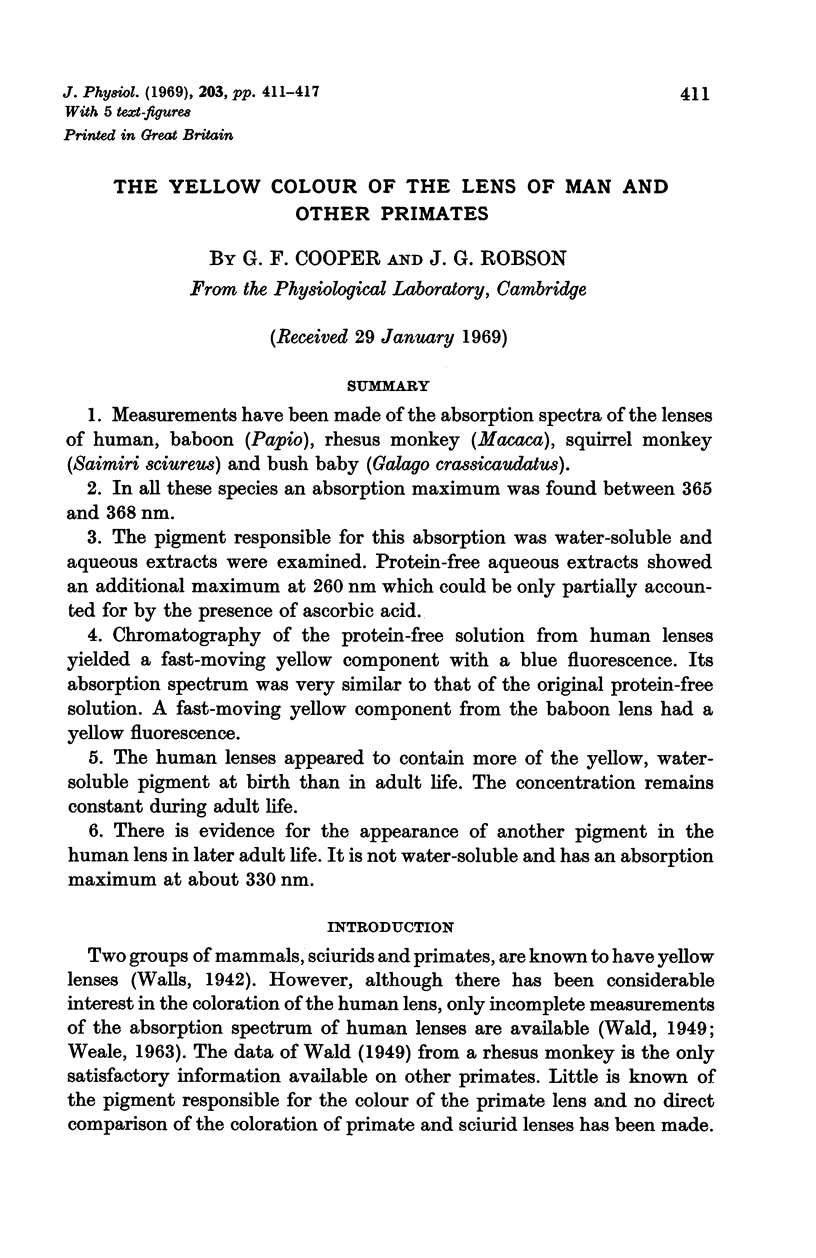
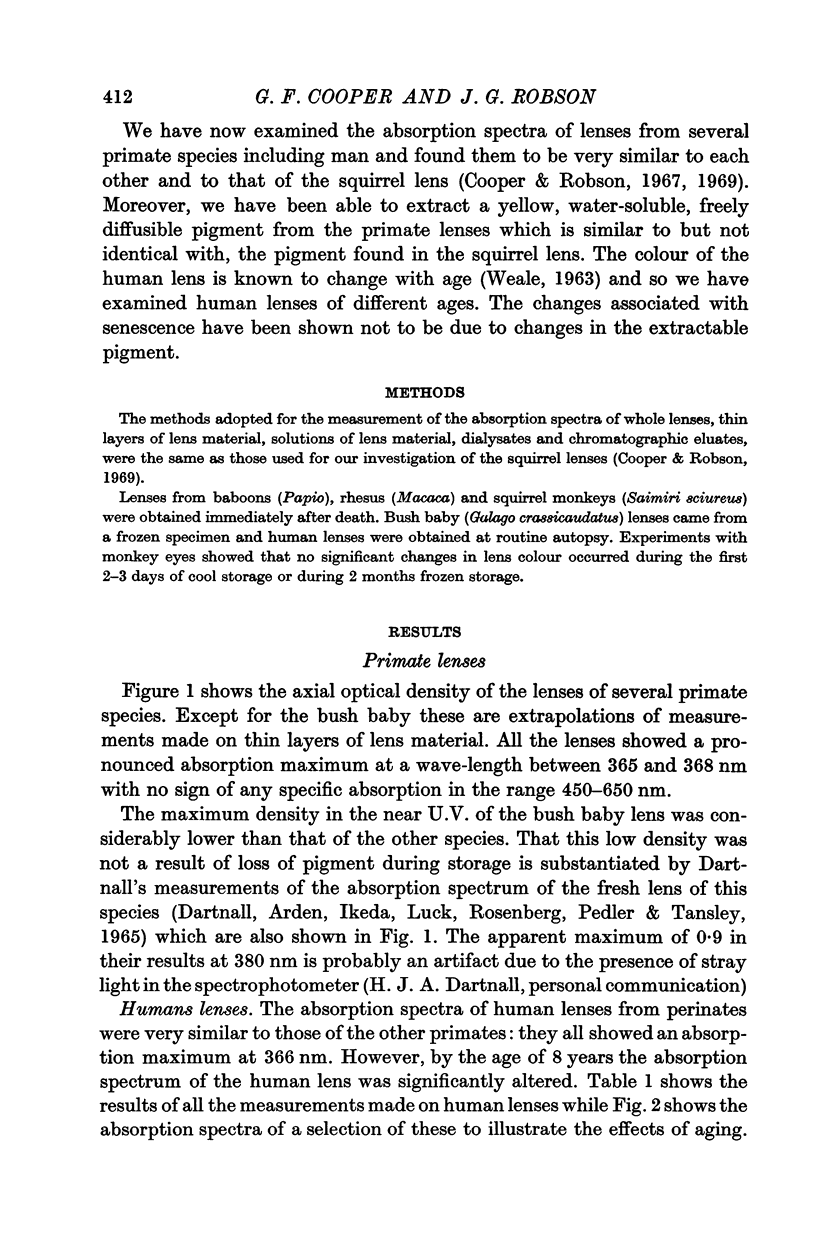
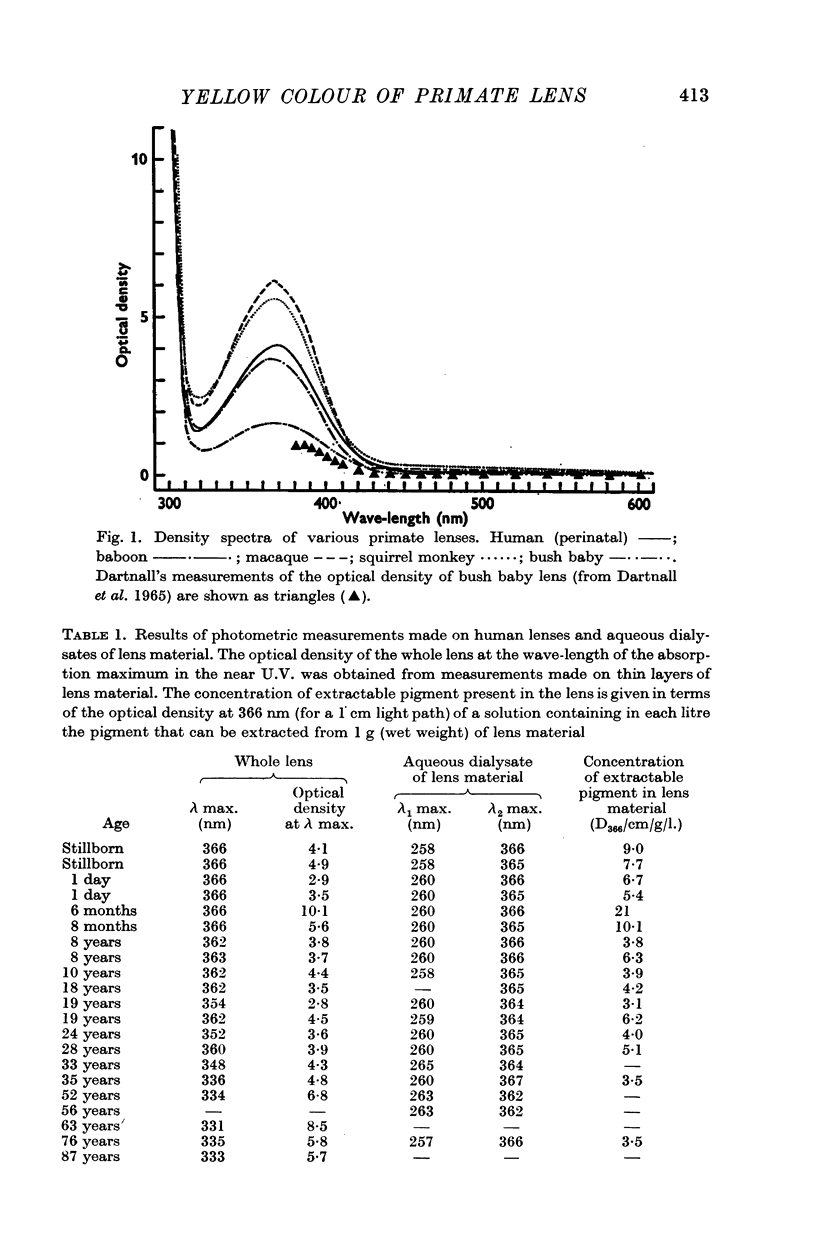
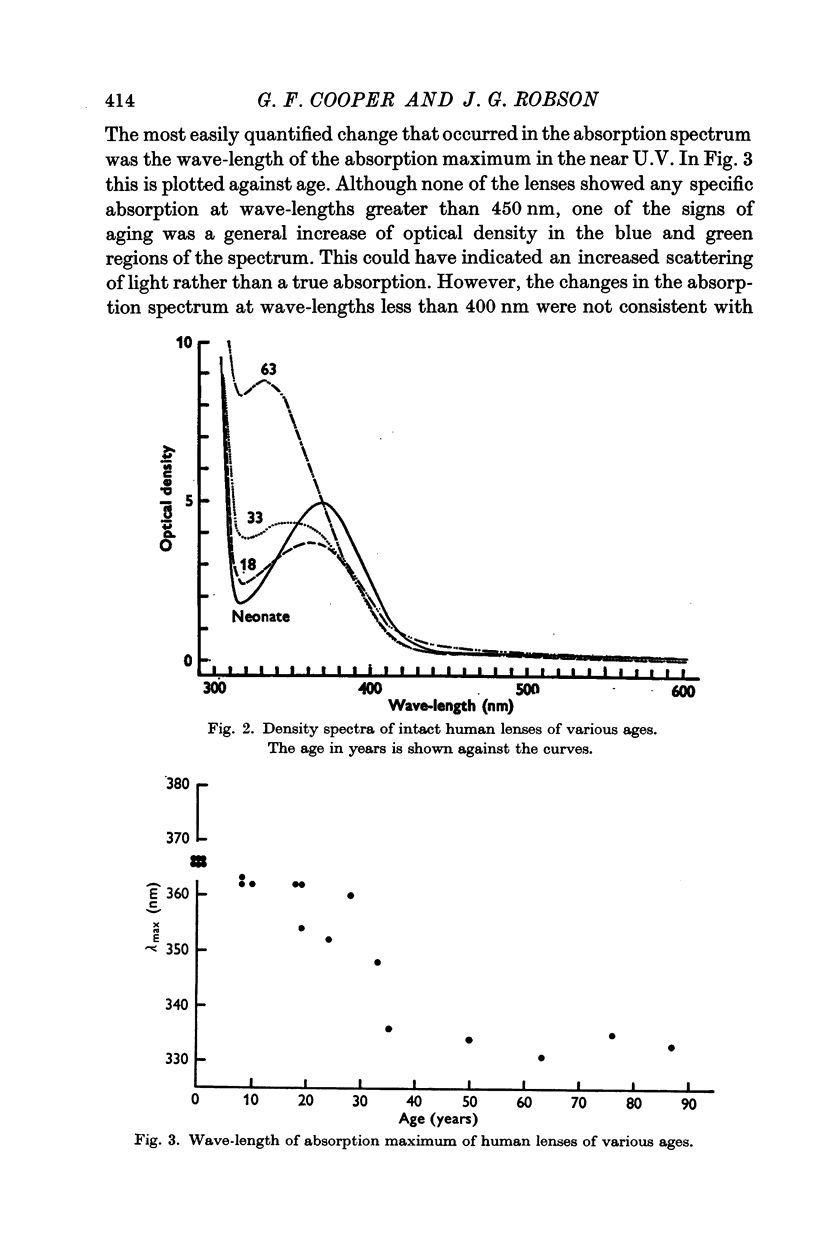
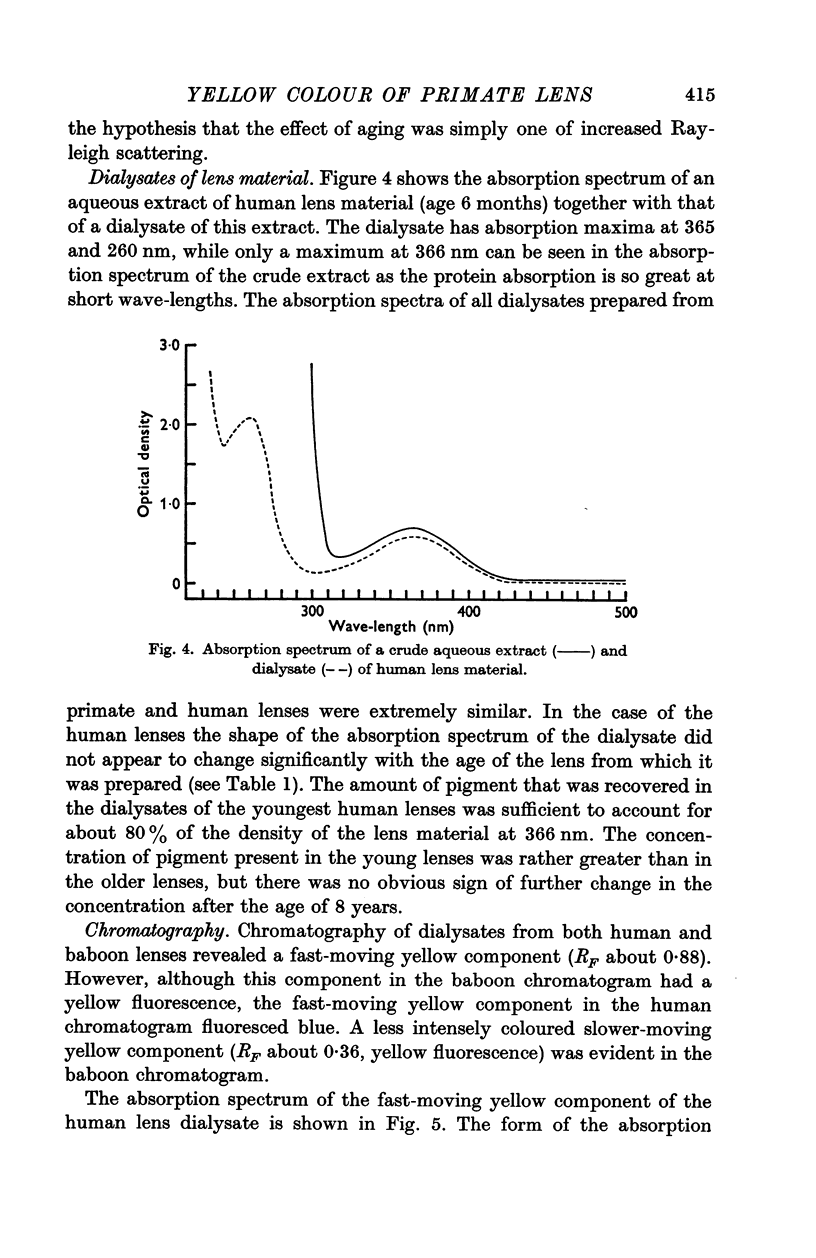
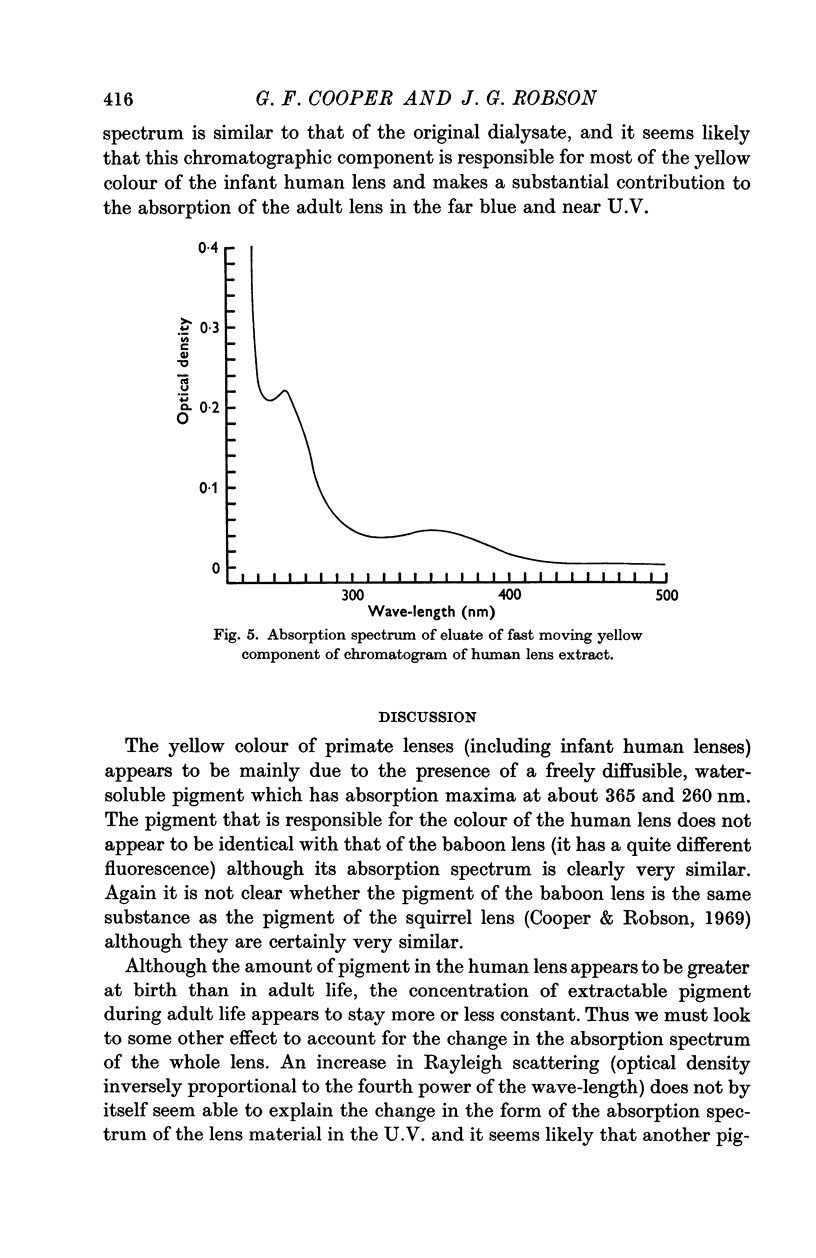
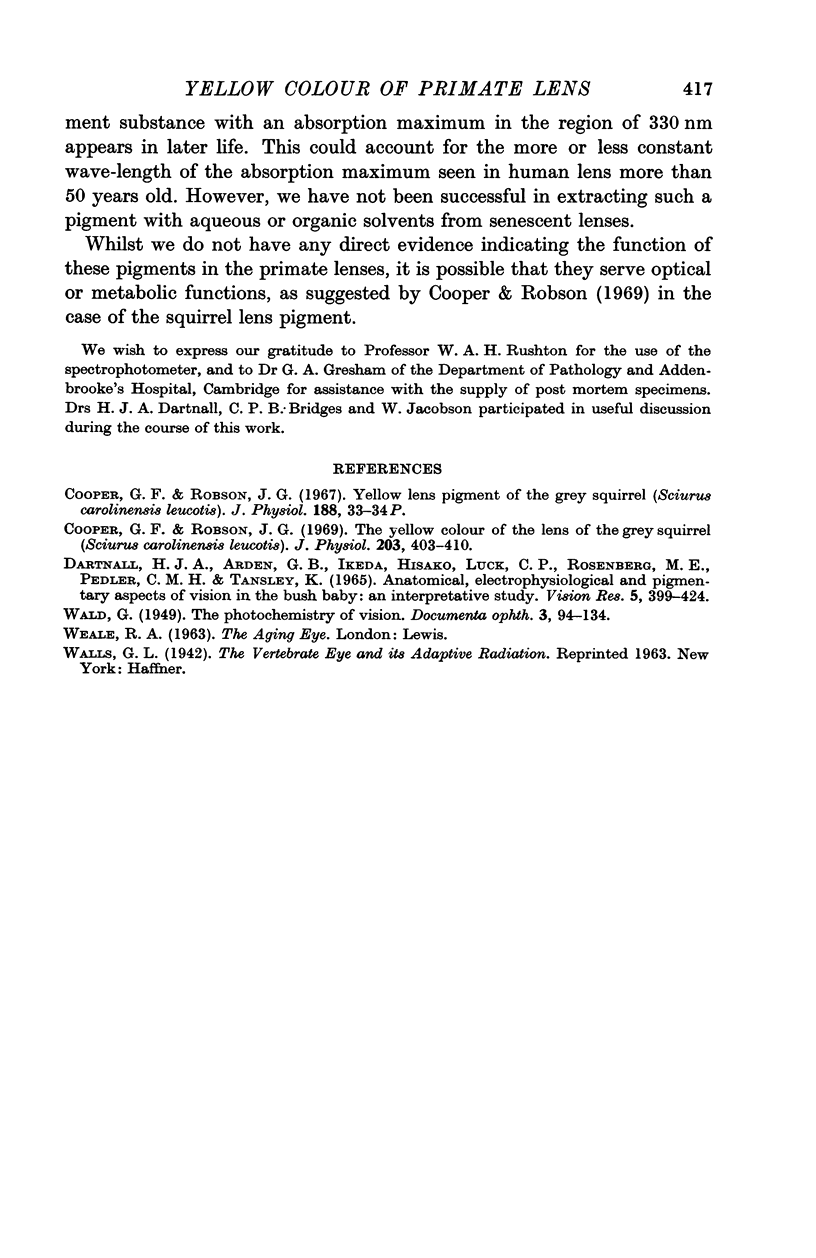
Selected References
These references are in PubMed. This may not be the complete list of references from this article.
- Cooper G. F., Robson J. G. The yellow colour of the lens of the grey squirrel (sciurus carolinensis leucotis). J Physiol. 1969 Aug;203(2):403–410. doi: 10.1113/jphysiol.1969.sp008870. [DOI] [PMC free article] [PubMed] [Google Scholar]
- Dartnall H. J., Arden G. B., Ikeda H., Luck C. P., Rosenberg M. E., Pedler C. M., Tansley K. Anatomical, electrophysiological and pigmentary aspects of vision in the bush baby: an interpretative study. Vision Res. 1965 Aug;5(7):399–424. doi: 10.1016/0042-6989(65)90049-0. [DOI] [PubMed] [Google Scholar]


